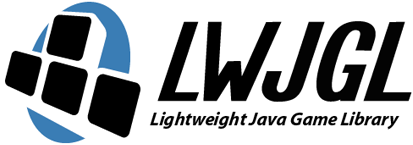
The following plug-ins are provided:
Both, documentation and sources, are only required for developers. Both, Javadoc and sources, are attached to the LWJGL library in order to allow you easy access to these information. That is, you can simply open an LWJGL class, and the source code will be opened. JavaDoc is available via tool-tip and with Shift-F2. You do not have to configure anything in order to access the documentation and the source code. The tools plugin makes JavaDoc and source code available for non-plugin projects as well.
Note that only the Java source code is provided, if you want to have a look at the native code, please download the LWJGL sources from the LWJGL website.
The org.lwjgl.tools plugin provides an already configured library to be added to a projects build path. It does not only provide the JARs and native libraries, relieving developers from configuring extra VM arguments in the run configuration, but it also configures Javadoc and source code to be available in Java projects just as in plugin projects.
Read more about how to set up the library here.In order to test whether your installation is correct and in order to retrieve additional information on your system, two views are provided. The test view draws a spinning torso, while the information view simply prints out available versions and features of your graphics card and OpenGL driver.
Read more about how to open the views here.